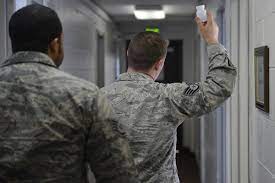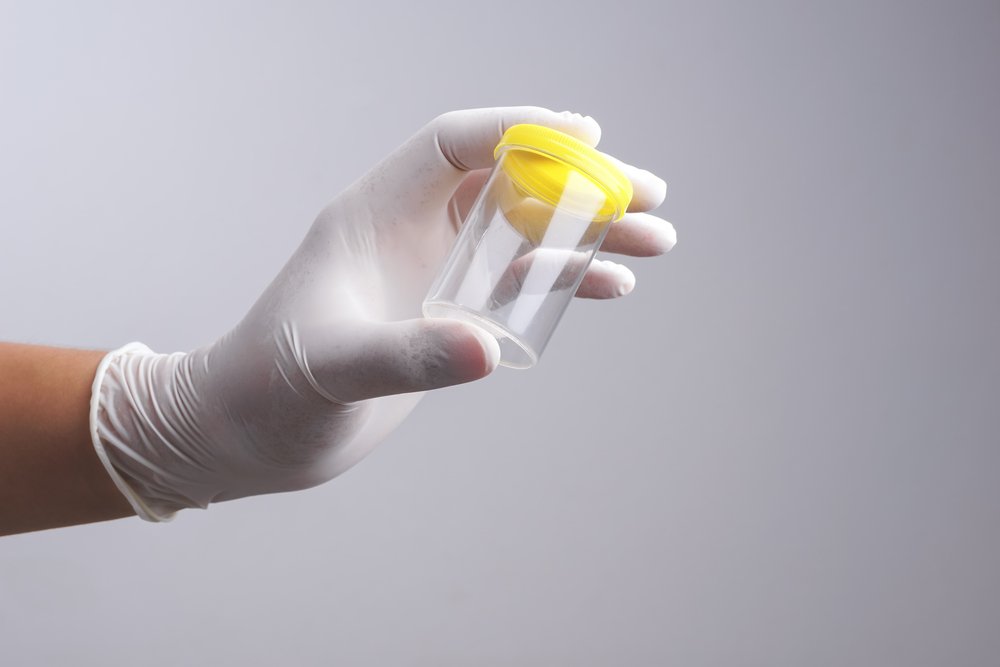In this guide, I’m going to tell you everything you need to know about military drug testing. The panel drug tests used, drugs looked for, cut-off levels, and how the tests are performed. I’m not in the military, but I do know a lot about drug testing. I’ve also tapped up a friend in the army (eight years of service) to verify the information in this guide.
Why does the military take such a firm stand on drug use? Simple. Any lapse in judgment or impairment can lead to devastating consequences in the line of duty. So there is a great reason why they can drug test, and they do drug test frequently.
Overview Of Drug Testing Policies In The U.S. Military
The U.S. military unsurprisingly operates a zero-tolerance policy on drug use. If you’re caught using illegal substances, then there are usually serious consequences. To enforce this policy, the military doesn’t leave any stone unturned. Drug testing programs are designed not only to detect illicit substances but also to deter service members from engaging in drug use in the first place.
The requirement is for a unit commander (usually a battalion commander) to drug test 10% of their personnel each month. In reality, some order more, and can even do a 100% drug test on the entire unit whenever they want.
So there’s no hard and fast rule, and the unit commander’s approach and attitude dramatically determine how often you are drug tested, but the 10% rule means that you will be at some stage each year, at least once.
When Could You Face A Military Drug Test?
Drug testing isn’t a one-time event in the military. It’s an ongoing process that occurs in several contexts. Let’s talk you through the main scenarios now.
- Enlistment and Commissioning
Every new recruit undergoes drug testing before they officially enter service. It’s a straightforward process. Test positive? You’re out.
There’s no second chance or probationary period here. For the military, integrity and reliability start from day one. But note that this is actually the same as in almost all civilian jobs. How many people would get a job if they tested positive during the recruitment process?
- Random Testing
Service members are subject to potential random testing throughout their careers. The element of surprise ensures compliance and accountability.
- Probable Cause Testing
Probable cause testing isn’t done on a whim, there has to be clear evidence or reliable information indicating possible drug use. Commanders have the authority to request tests under these circumstances. If there is suspicion, this can even be more than one test, and you could be targeted for weeks and months after an event that has prompted the suspicion.
- Pre/Post-Deployment and Post-Leave Testing
Returning from a deployment or an extended period of leave? You’re likely to face a drug test. This precautionary measure ensures that service members haven’t engaged in drug use during periods away from the military, or at a time when they need to be at their sharpest.
- Post-Accident Testing
If there’s an accident or an incident, then testing can be conducted to rule out drug involvement. Whether it’s an equipment failure or a tactical error, knowing whether drugs played a role is a key part of the investigation.
How Does The Military Test For Drugs?
The Army drug test is primarily urinalysis, and that’s the same for the Marine Corps, Navy, and Air Force. It’s used most widely for the same reasons as in civilian circumstances – it offers the best balance of cost, reliability, and duration of detection.
These are the things you need to know about the military drug test process
- Supervised collection process
- Meticulous chain of custody
- Accredited lab analysis
- Zero tolerance policy for failure
Service members are required to provide a urine sample under strict conditions. While privacy is respected, samples are monitored closely enough to prevent tampering or substitution.
Once the sample is collected, it’s sealed and labeled with precision. Every step from collection to analysis is documented meticulously.
The military uses accredited drug testing laboratories for analysis. At these facilities, the samples undergo an initial screening, usually using enzyme immunoassay tests. If the initial test flags a sample as positive, then a confirmation test is done. That employs more sophisticated techniques like gas chromatography-mass spectrometry (GC-MS) or liquid chromatography-tandem mass spectrometry (LC-MS/MS).

Types Of Drug Tests Conducted – What Drugs Do The Military Test For?
The military uses several types of drug tests, each designed to detect a specific range of substances. These are the typical tests used:
1. Industry standard 5-Panel Test
This is the most common drug test and is exactly the same as the standard test used in civilian circumstances, including Department of Transport (DoT) regulated industries.
It screens for five key substances:
- Marijuana
- Cocaine
- Amphetamines/methamphetamines
- Opiates
- PCP
2. Extended 10-Panel Test
The 10-panel test broadens the scope, adding these additional drugs to the screening list:
- Benzodiazepines
- Barbiturates
- Methadone
- Propoxyphene
- Quaaludes
This expanded list covers not just illicit drugs but also prescription medications that can be misused.
3. Military 26-Panel Test
The 26 panel test used by the military is crazy over the top, but it’s designed to be completely comprehensive. It looks for a wide range of substances, including newer synthetic and designer drugs that are increasingly widely used but that are normally not detectable on standard drug testing. This test includes all the substances from the standard 5-panel and extended 10-panel tests, plus many more. The aim is to detect as many drug types as possible and act as the ultimate deterrent.
The 26-panel test looks for:
- Marijuana (THC)
- Cocaine
- Amphetamines (including methamphetamine)
- MDMA (Ecstasy)
- MDA (Adam)
- Opiates (such as morphine, codeine, and heroin)
- Hydrocodone
- Oxycodone
- Hydromorphone
- Oxymorphone
- Benzodiazepines (such as Valium and Xanax)
- Barbiturates (such as phenobarbital)
- Methadone
- Propoxyphene
- Synthetic Cannabinoids (also known as Spice)
- Synthetic Cathinones (such as bath salts)
- Fentanyl
- Tramadol
- Buprenorphine
- Ketamine
- LSD
- PCP (Phencyclidine)
- Steroids
- Carisoprodol (Soma)
- Meprobamate
- Methaqualone (Quaaludes)
Interestingly, the military does not look for magic mushroom use in standard testing, but it does have the capability to test for psilocybin if there is a specific reason to do so. This is specialized testing that can be requested and conducted by the Armed Forces Medical Examiner System (AFMES) if there is suspicion.
Another point to note is that the use of the 26-panel test is not common. It’s reserved for situations where there’s a need for heightened scrutiny. This could be a special investigation, cases involving high-ranking personnel, or even scenarios where there’s suspicion of synthetic drug use that is being missed by standard 5/10 panel testing.
What Are The Consequences Of A Positive Drug Test Result?
For the most positive results, the military initiates and immediate administrative action process. This usually leads to an administrative discharge. It’s swift and definitive. The message is clear—there’s no room for illicit drug use in the ranks. Note that this also includes marijuana use. And not just marijuana, but dabs, novel cannabinoids, or even hemp products that have above the legal limit of THC in them.
In more severe cases, such as the dealing and distribution of drugs, or the use of particularly dangerous substances, then your face a court-martial. This can be a full court-managed justice system that leads to imprisonment within the military prison system, or discharge followed by you being passed to the police for investigation.
There is some room for rehabilitation. In some cases, especially for first-time offenders, or those dealing with prescription drug misuse, service members may be referred to rehabilitation programs instead.
These programs aim to address the root causes of drug misuse and help personnel return to duty. However, from everything I have read and learned, this is rare and you would be very lucky to get this. I suspect if you are a highly financially invested service member (specialist role) then you might, but your basic “grunt” will be discharged
Is It Possible To Beat A Military Drug Test?
It certainly is possible to beat a military drug test, no matter what type of test it actually is. Some people in these situations obsess over military drug test cut off levels. Look, the same as in the civilian well, my advice is to forget those.
Cut off levels vary, and even if you test negative on a home drug test, because they are less sensitive, it could still mean failure on a military drug test – especially as these go straight for lab analysis.
Note that because of the close supervision and lab analysis, there is no way that you can use synthetic urine to beat a military drug test.
The ways to beat the military urinalysis are as follows:
- Use Rescue Cleanse detox drink. 90 minutes before your test, consume it and then urinate three or four times.As long as you have abstained for 24 – 48 hours before the day of your test as well, then you stand a really good chance of it masking the toxins in your body for long enough to pass a test (you’ll get up to 5 hours clean). Click here to buy Rescue Cleanse.
- Fully detox your body using Toxin Rid pills. The more drugs you have taken, the longer the course of pills you will need. Detox as much as you can using the pills, then use Rescue Cleanse on the day of your test, and the combination will give you an even better chance of testing clean. You can buy Toxin Rid straight from the manufacturer.




